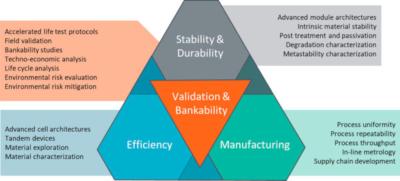Researchers design novel passivation approach to achieve perovskite solar cells with efficiency of over 23%
Researchers from The Australian National University, Flinders University, University of New South Wales and The University of Sydney have developed a perovskite solar cell with a novel passivation process based on the use of guanidinium (Gua) and octylammonium (Oa) spacer cations.
A schematic showing the device structure and the surface incorporation of GuaBr, OABr, and their mixture. Image from RL Solar
The team claims that guanidinium salts can improve the performance of the perovskite film, as guanidinium ions are capable of penetrating into the bulk of the perovskite material and localizing at the grain boundaries (GBs).








